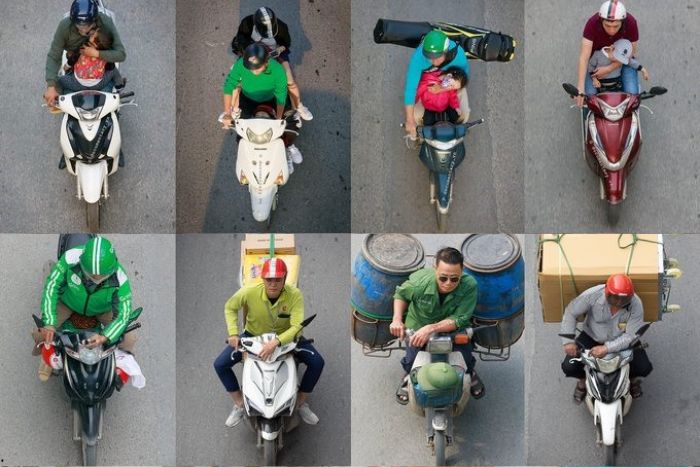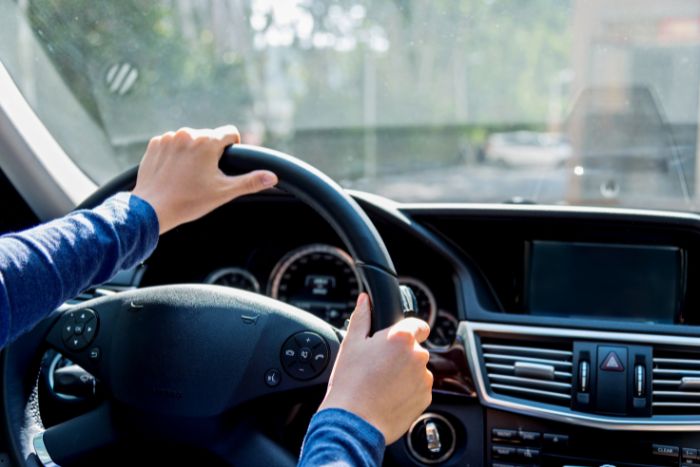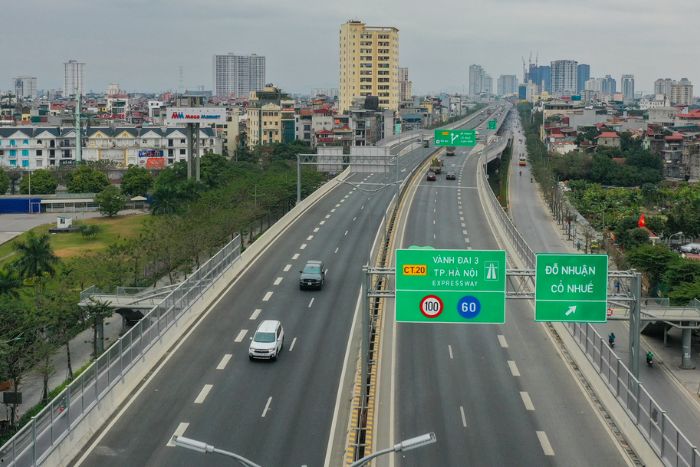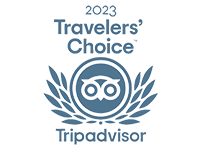How To Drive In Vietnam ? Driving Guide For Foreigners

Driving in Vietnam can be both an exciting and bewildering experience for foreigners. With its bustling streets, millions of motorbikes, and sometimes surprising traffic rules, Vietnam offers a unique driving landscape that requires careful preparation from drivers. For foreigners planning to drive in Vietnam during their holiday, it’s crucial to understand not only the specificities of Vietnamese traffic but also the necessary administrative procedures, such as obtaining an international driving permit. Here is a comprehensive guide to driving in Vietnam, including all the necessary preparations and practical tips for a memorable and safe journey.
Table of Contents
I. Overview of traffic in Vietnam
With a population of 99.5 million people (2024 data), Vietnam is famous for its lively traffic and crowded streets filled with vehicles. Motorbikes and scooters, the main means of transportation, dominate the roads. It’s common to see small motorbikes carrying large loads while maintaining impressive balance.
For foreigners, driving in Vietnam can seem chaotic. Traffic rules may appear flexible, and local driving habits greatly differ from those in Western countries. The road infrastructure also varies, with well-maintained roads in major cities and often more degraded ones in rural areas.
For visitors and expats, adapting to this dynamic requires time, patience, and a good amount of observation. By understanding the particularities of Vietnamese traffic, you can enjoy a safe and pleasant driving experience in Vietnam.

II. All vehicles in Vietnam
As mentioned, Vietnam has chaotic traffic with a wide variety of vehicles and drivers of all ages, from the young to the elderly. Recognizing the different types of vehicles on the road will help you drive in Vietnam more easily.
1. Bicycles and electric bikes: Used by young people, teenagers, and the elderly.
2. Motorcycles and scooters: For individuals aged 18 and older, these are the main means of transportation for Vietnamese people.
3. Cyclo: Often found in tourist areas of cities, offering visitors a slow-paced way to explore the streets. Prices range from 150,000 to 300,000 VND, depending on the duration and route.
4. Moto-taxi (xe ôm): Typically driven by men wearing green, blue, or yellow uniforms. You can book them via mobile apps like Grab, Be, XanhSM at affordable rates.
5. Cars: Recently, more and more cars have appeared on the streets of Vietnam, mainly in large cities.
6. Taxi: Similar to moto-taxis, ordering a taxi via apps will allow you to benefit from more favorable rates than traditional street-hail taxis (around 20,000 VND/km).
7. Bus: The cheapest public transport in Vietnam costs between 7,000 and 10,000 VND. However, it's important to have cash in Vietnamese currency and arrive a bit earlier to avoid missing the bus. If you see a bus on the road, it's also better to keep your distance, as buses in Vietnam drive very fast.
8. Traditional train: An alternative means of transportation between provinces in Vietnam, apart from flying. Although train ticket prices are stable, the travel time will be longer.
9. Sky train (Hanoi): New public transport in Hanoi with modern facilities. Ticket prices are around 8,000 to 15,000 VND per trip. However, in tourist areas, the sky trains do not have lines suitable for visitors.
10. Truck: In cities, they usually travel at night, while in suburban areas, you will encounter trucks during the day. If you decide to drive in Vietnam, it’s important to be cautious and give way to these vehicles.

III. Traffic rules in Vietnam
1. For two-wheelers
- Helmet required: Whether you're riding an electric bike, motorbike, or scooter, always wear a helmet for your safety.
- Traffic lights: Surprisingly, red lights are not always followed by locals. However, as a foreigner driving in Vietnam, it's best to obey traffic signals. If the light is about to turn green, you can start accelerating to move forward.
- Safe speed: Adjust your speed according to traffic conditions. The maximum speed in the city for motorbikes in Vietnam is 50 km/h.
- Safe distance: Maintain a sufficient distance from other vehicles and pedestrians. Be cautious of large vehicles like buses and trucks, as they often drive as if they're alone on the road.
- Signal your movements: Use your indicators to signal turns. Additionally, use the horn to alert others of your presence.
2. For cars
- Speed limits: When driving a car in Vietnam, the average recommended speed in cities is 30 to 40 km/h due to the high density of vehicles and numerous intersections. The maximum speed allowed in the city is 50 km/h. Only on highways can you drive at a maximum speed of 80 to 100 km/h.
- Right-hand traffic: This is a basic traffic rule in Vietnam, whether you're driving a motorbike or a car.
- Yield to large vehicles: Just like with motorbikes, car drivers should carefully observe and give way to buses, trucks, and other specialized vehicles.
- Drinking and driving: This is a fundamental rule not only for driving in Vietnam but anywhere in the world: the legal blood alcohol limit in Vietnam is 0 g/l. Penalties for drunk driving are very severe. You may face fines, have your driver's license suspended, or, depending on the severity, be sentenced to prison.
Adhering to traffic rules will help you drive safely in Vietnam and avoid accidents.

3. For pedestrians
Many foreigners are impressed by the confidence of Vietnamese people as they cross the street, weaving through the moving motorbikes and cars. For pedestrians in Vietnam, it's crucial to clearly signal your intentions to drivers so they can anticipate and avoid you. Here are some tips for crossing the street:
- Raise your hand: To indicate that you intend to cross. Don’t be afraid; drivers will slow down and give you the right of way.
- Stay confident: Cross slowly but don’t turn back or retreat.
- Wait for the right moment: When traffic is less dense before crossing.
- Avoid crossing: When large vehicles like buses, coaches, or trucks are in motion.
IV. Requirements for driving in Vietnam
1. International Driving Permit
If you already have a national driving license and plan to travel to Vietnam for less than 3 months, you can obtain an International Driving Permit (IDP). Here's how to apply for an IDP:
- It must always be presented along with your national driving license.
- Visit the office in person or apply online if available.
- receive your IDP on the same day or within a few days.
- The cost is approximately 19,95 USD.
2. Vietnamese Driving License
If you are staying in Vietnam for more than 3 months, you must have one of the following 2 types of driving licenses:
1) Motorcycle driving license in Vietnam
2) Car driving license in Vietnam
The procedure for applying for a driving license in Vietnam:
- Fill out an application form (available at the Traffic and Public Works Office in Hanoi, or the Transport Office in Ho Chi Minh City).
- Present your passport, visa, and national driving license.
- Pass the theoretical and practical exams.
- Pay the necessary processing fees.
- Expect a processing time of about 2 weeks.
- Estimated cost: around 600,000 VND.

V. Renting a car with a private driver or driving yourself in Vietnam?
Generally, renting a car without a driver might seem more economical for your trip. Moreover, it allows you to plan your itinerary more freely and flexibly. However, driving in Vietnam is much more challenging due to the dense traffic. If you are stopped by the local police, you will need to present an international driving permit accompanied by a certified translation in Vietnamese. Additionally, foreigners driving a car in Vietnam must have a Vietnamese guide in the vehicle. As a result, the cost of renting a car without a driver isn't significantly cheaper than renting one with a driver.
In my opinion, it is better to rent a car with a private driver for your trip to Vietnam. Although it may be slightly more expensive, the administrative processes will be much simpler. Furthermore, you will avoid issues related to traffic jams and winding roads in the mountainous regions of northern Vietnam.
Additionally, renting a car with a driver allows all travelers to fully enjoy the trip without anyone needing to drive or getting tired during long journeys.

Travel insurance is not a legal requirement for renting a car in Vietnam, but it is strongly recommended. Travel insurance Vietnam can protect you against various risks such as accidents, vehicle damage, and medical emergencies.
Cars in Vietnam are less common compared to motorcycles due to high costs, dense traffic, and narrow streets. Motorcycles are preferred for their affordability and maneuverability in busy urban areas of this country.
Related travel guide
Other similar articles
CUSTOMIZABLE BY LOCAL EXPERTS
Personalized trip at the original price!
REFUND GUARANTEE
We believe in our work and promise to give you money back.
GOOD PRICE / QUALITY
95% satisfied more than expected!
24/7 LOCAL SUPPORT
We are always available online to provide assistance at any time.
Most read articles
Autour Asia is highly recommended on
Embracing the mission of "Satisfied more than expected" and providing authentic experiences, we have received numerous recommendations on reputable travel forums:























